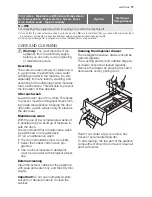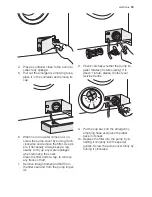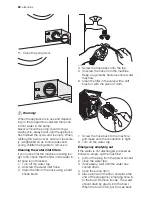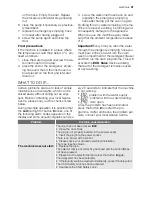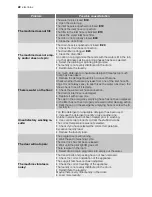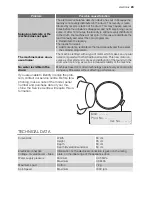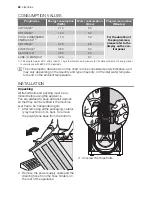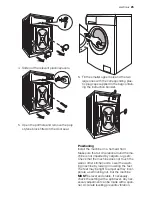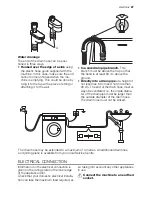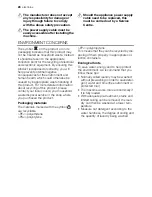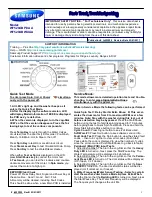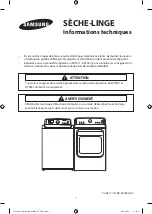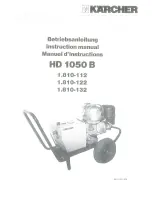
Grass:
soap lightly and treat with bleach
(whites and fast coloureds only).
Ball point pen and glue:
moisten with ace-
tone
1)
, lay the garment on a soft cloth and
dab the stain.
Lipstick:
moisten with acetone as above,
then treat stains with methylated spirits.
Treat any residual marks with bleach.
Red wine:
soak in water and detergent,
rinse and treat with acetic or citric acid,
then rinse. Treat any residual marks with
bleach.
Ink:
depending on the type of ink, moisten
the fabric first with acetone
1)
, then with ace-
tic acid; treat any residual marks on white
fabrics with bleach and then rinse thorough-
ly.
Tar stains:
first treat with stain remover, me-
thylated spirits or benzine, then rub with de-
tergent paste.
Detergents and additives
Good washing results also depend on the
choice of detergent and use of the correct
quantities to avoid waste and protect the en-
vironment.
Although biodegradable, detergents contain
substances which, in large quantities, can
upset the delicate balance of nature.
The choice of detergent will depend on the
type of fabric (delicates, woollens, cottons,
etc.), the colour, washing temperature and
degree of soiling.
All commonly available washing machine de-
tergents may be used in this appliance:
• powder detergents for all types of fabric
• powder detergents for delicate fabrics
(60°C max) and woollens
• liquid detergents, preferably for low tem-
perature wash programmes (60°C max)
for all types of fabric, or special for wool-
lens only.
The detergent and any additives must be
placed in the appropriate compartments of
the dispenser drawer before starting the
wash programme.
If using liquid detergents, a programme
without
prewash must be selected.
Your appliance incorporates a recirculation
system which allows an optimal use of the
concentrated detergent.
Follow the product manufacturer’s recom-
mendations on quantities to use and do
not exceed the «MAX» mark in the de-
tergent dispenser drawer
.
Degrees of water hardness
Water hardness is classified in so-called “de-
grees” of hardness. Information on hard-
ness of the water in your area can be ob-
tained from the relevant water supply com-
pany, or from your local authority.
A water softener must be added when
water has a medium-high degree of
hardness (from degree of hardness II).
Follow the manufacturer’s instructions.
The quantity of detergent can then al-
ways be adjusted to degree of hard-
ness I (= soft).
Level
Charac-
teristic
Degrees of water
hardness
German
°dH
French
°T.H.
1
soft
0-7
0-15
2
medium
8-14
16-25
3
hard
15-21
26-37
4
very hard
> 21
> 37
WASHING PROGRAMMES
Programme - Maximum and Minimum Temperature
Cycle Description - Maximum Spin Speed - Maxi-
mum Fabrics Load - Type of Laundry
Options
Detergent
Compartment
COTONI
90° - Cold
Main wash - Rinses
Spin at the maximum speed
Max. load 7 kg - Reduced load 3,5 kg
1)
White cottons
(heavily or normally soiled items).
SPIN
ANTIPIEGA
PREWASH
2)
EXTRA RINSE
TIME MANAGER
1) do not use acetone on artificial silk
14
electrolux
Summary of Contents for EWF 16487 W
Page 1: ...user manual Washing Machine EWF 16487 W ...
Page 29: ...electrolux 29 ...
Page 30: ...30 electrolux ...
Page 31: ...electrolux 31 ...
Page 32: ...132 943 500 00 252010 www electrolux com shop ...

















